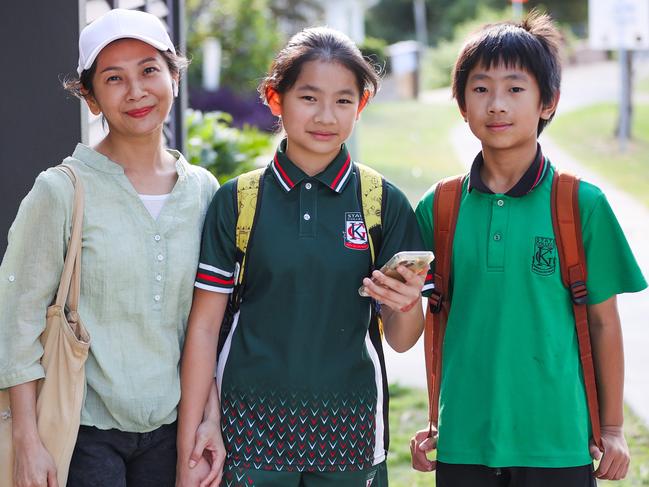Cyber-bullying figures reveal 98pc of girls aged 14-19 affected
Nearly all girls aged 14-19 have been subject to this growing trend – leading to drastic results.

QLD News
Don't miss out on the headlines from QLD News. Followed categories will be added to My News.
Cyber-bullying is pushing teen girls towards cosmetic procedures and eating disorders in frightening numbers, the first study of its kind has revealed.
Nearly all girls aged 14-19 have been cyberbullied, with 62 per cent of attacks relating to appearance, making them feel ashamed of their bodies.
The bullying has sparked 92 per cent of them to want to change how they look with dieting and exercise and more than 80 per cent say they want cosmetic procedures.
The University of the Sunshine Coast study of 336 girls is believed to be the first to comprehensively investigate the effects of appearance-related cyber-bullying on girls’ mental health and wellbeing.
USC neuroscience researcher Taliah Prince said the results were concerning given appearance-related cyber-bullying was the most common form of cyber-bullying experienced by adolescent females.
“We found 98 per cent of the adolescent females surveyed had experienced cyber-bullying and that the majority of these incidents were appearance-related, where they were teased or insulted about their body weight, shape or physical features,” she said.
“More than 96 per cent of these appearance-related cyber-bullying victims expressed a desire to change their appearance as a result – which can lead to harmful behaviours like extreme dieting and excessive exercise – while 81 per cent felt the need to change their appearance through cosmetic procedures.”
Ms Prince, a PhD candidate at UniSC’s Thompson Institute, said eating disorders had the highest mortality rate of all psychiatric disorders in girls.
“Because appearance-related cyber-bullying is associated with body dissatisfaction and eating disorder symptoms, we must understand its prevalence and impact and how it might be contributing to these serious mental health conditions,” she said.
The findings demonstrate the profound consequences of appearance-related cyber-bullying at a vulnerable time in brain development.
Ms Prince said it highlighted the urgent need for guardians, educators and policymakers to learn what young women were being subjected to online.
“There needs to be more education around what our young people are being exposed to, targeted interventions, prevention strategies and restrictions around social media – especially given some adolescents are spending seven hours per day on digital devices,” Ms Prince said.
“Digital literacy is so important. We have to teach our young kids ... how to navigate the digital world safely.
“It’s crucial to foster open communication about cyber-bullying and body image, and to implement age-appropriate social media guidelines and support health promotion programs that encourage positive online behaviour and positive body image.”

NO PHONE, NO PROBLEM
Kelvin Grove State College student Wendy Lou, 12, says she does not have a phone despite all her friends having one.
Instead, she uses her Facebook and TikTok accounts on her laptop.
Mum Anita Lou said she monitored both Wendy and her 10-year-old son Tim’s digital usage when they are at home.
“We learnt about the dangers of social media and the internet at (Wendy and Tim’s) school,” Ms Lou said.
“We were taught about social media risks in HPE,” Wendy said.
“When they use the laptop or tablet, they sit at the dining table so I can make sure they are staying safe online,” Ms Lou said.
“I worry about (Wendy) using her laptop and social media for long periods at a time.
“I feel it is my responsibility to protect them from what is on the internet. I think all parents need to protect their children from social media.”
Ms Lou said she planned to give both Wendy and Tim a phone when they were further along in their high school studies.
“Just so I can stay in contact with them after school,” she said.
Originally published as Cyber-bullying figures reveal 98pc of girls aged 14-19 affected



